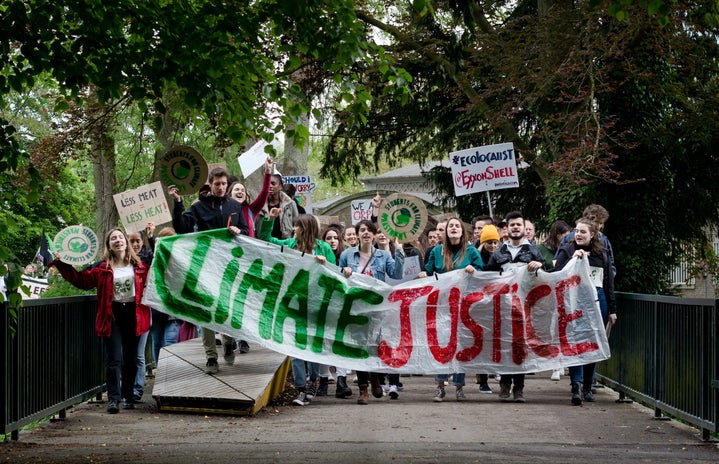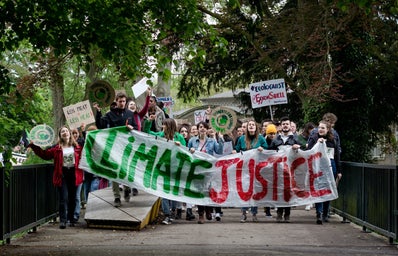Everybody knows about climate change. Everybody knows that we should be doing our part to fight it. But do you know what environmental justice is?
So, What is Environmental Justice?
The definition of environmental justice is that everyone should have the same environmental benefits as well as protections. What this definition fails to mention is that all people deserve equity in terms of housing, healthcare, education and much more.
The flipside of this is environmental injustice. This means that historically underserved communities are more likely to bear the brunt of environmental issues and hazards. An example of this is when Hurricane Katrina ripped through Louisiana in 2005. Black residents in New Orleans reported that they felt the aftereffects of the storm for longer compared to white residents. Black residents were disproportionately affected even though the storm affected the whole city.
So, how did the movement start?
It started in Warren County, North Carolina back in the 1970s. The state was deciding where it could house PCB filled soil. PCB, or Polychlorinated Biphenyls, are cancer-causing chemicals typically found in paint and industrialized plastics. Their use was banned industrially in 1979.
The state decided to place this toxic soil in Warren County, right outside of a small community named Afton. This community was overwhelmingly a black, low-income town with a history of farming. The community banded together once they heard of the plan.
In 1982, as the dump trucks came into the town, the people blocked the roads. They marched for over 6 weeks with civil rights leaders joining the movement. Over 500 people were arrested including children. These were considered the first protests over a landfill in the United States. Unfortunately, the landfill was ultimately placed a few miles out of Afton.
In 1987, the first national study was conducted and found that millions of communities of color had at least one toxic site near them. This demonstrated that race was the biggest factor as to where toxic sites would be placed.
In 1990, after meeting with the Congressional Black Caucus, the EPA created a workgroup to address environmental racism. In October, Dr. Robert Bullard, considered the father of the EJ movement, wrote “Dumping in Dixie.” This was the first published book that communicated issues of environmental injustice.
A year later, Washington D.C. hosted the first National People of Color environmental leadership summit. The 17 principles of environmental justice were adopted by attendees of the summit. These principles explained what the movement wanted to accomplish including protecting the earth and denouncing instances of environmental injustice.
In 1992, the office of environmental justice was founded. The second book referencing environmental justice is written, further exploring instances of environmental hazards and the potential impacts on communities of color.
In 1994, an executive order issued by Bill Clinton outlined the actions the federal government should take to address issues of environmental justice in both communities of color and low-income populations.
In 2001, almost 20 years after the PCB landfill was placed in Warren county, the EPA started the process of remedying the situation. This included getting resources from both the state and federal government to help develop the area further.
In 2005, the CARE program was established by the EPA. CARE stands for Community Action for a Renewed Environment and provides grants to organizations in order to establish community partnerships. A couple of years later, another study based on the first in 1987, looked at hazardous waste in communities of color.
In 2010, the Obama administration hosted a forum at the white house with over 100 leaders of the environmental justice movement attending. In 2014, the EPA released a training course for federal employees educating them on the importance and history of the movement.
In 2014, EPA policy was established to help Indigenous people through environmental justice issues. In 2015, the online tool EJScreen was released as an online mapping tool. With the tool, you can look at an area of land and see the potential environmental threats in that area.
Recent Steps
Just this past year, President Biden signed an executive order to further commit to the principles of environmental justice. The executive order outlines how to address issues of injustices including pollution. It will also create a new office of environmental justice in order to better implement beneficial policies.
Biden also announced new steps the white house would be taking separate from the executive order. They are planning to create an environmental justice scorecard which evaluates agency efforts to help achieve the goal of justice. Another step is to stop plastic pollution especially in these underserved communities. President Biden has also made huge investments into environmental justice policy and is focusing on giving 40% of benefits (clean water, housing, etc.) to underprivileged communities. He is also trying to better enforce existing environmental laws and investigate previous real-world examples of environmental injustice. This includes the water crisis in Jackson, Mississippi and other unethical practices in both Texas and Alabama. The office is also striving to continue to acknowledge indigenous history, almost 10 years after EPA policy was released to help tribes.
There are still many steps to achieving true environmental justice in the world which includes learning about the history of this impactful movement. We as a collective people, cannot let environmental injustices keep happening unfettered. Educating both the public and our representatives is the first step in a long fight to making sure all communities are protected from environmental hazards.


